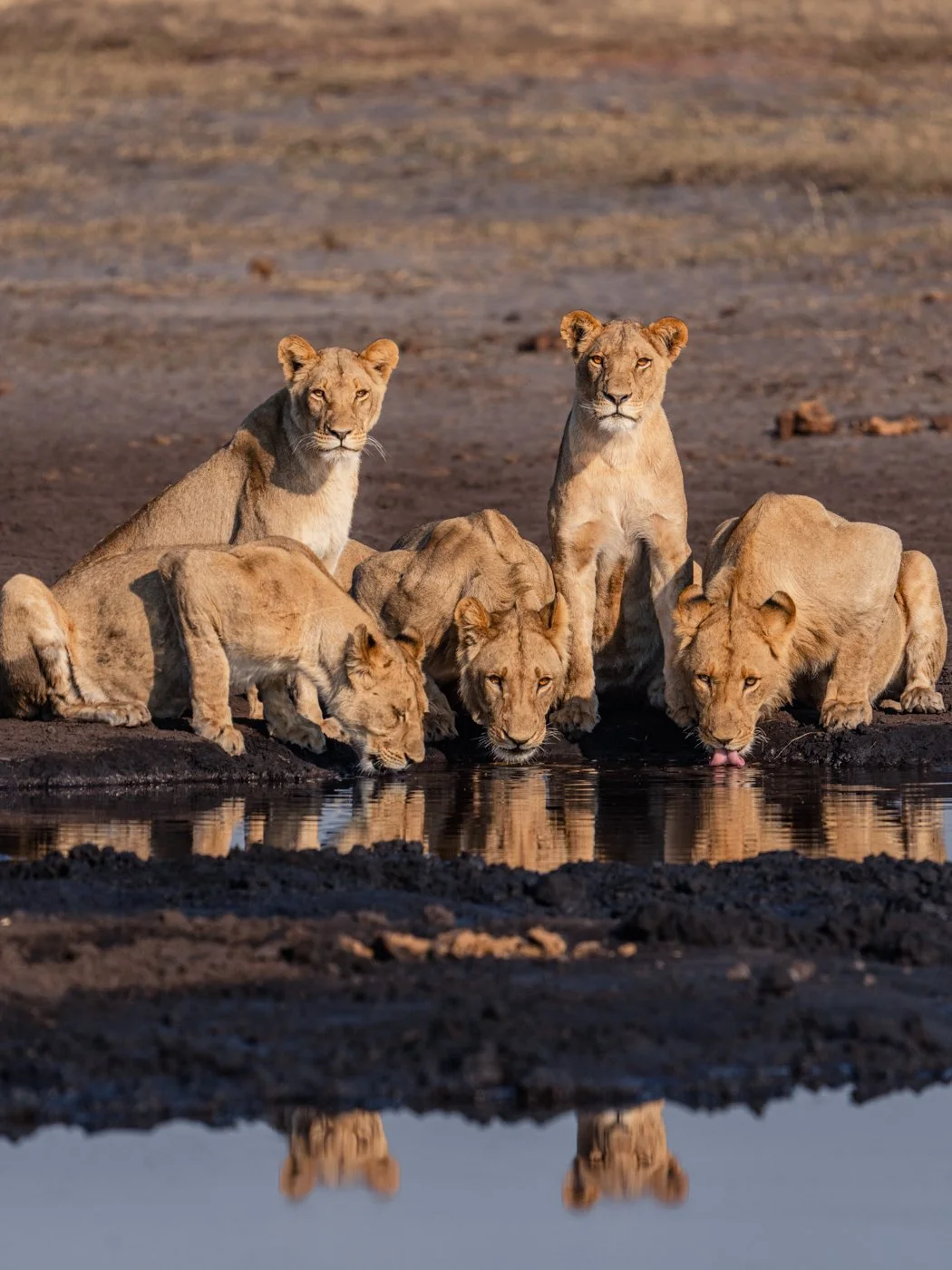HWANGE NATIONAL PARK
03
DUST CLOUDS THE VLEI
In The Morning Sun
And Hundreds of Buffalo
A YELLOW HAZE DOTTED WITH TERMITE MOUNDS
THIS LONG DRY RIVERBED EXTENDS AS FAR AS THE EYE CAN SEE, A NEVER_ENDING OTHERWORLDLY LANDSCAPE.
Growls and grunts dominate the air on this particular morning; the hunger of lions is palpable. A pride of ten has taken down a buffalo calf, and we find them huddled in a circle feeding, the only part of the calf visible a hoof sticking into the air. One of the females pauses and looks up at me, her face covered in blood.
THE BUFFALO STAND ONLY A FEW METERS AWAY
Watching as the Lions Feed on One of their Young.
My first visit to Hwange, Zimbabwe’s largest national park that spans over 18,000 square kilometers, was filled with the wonders of green season. Birds aflutter, antelope bounding through tall grasses and the newborn grand cubs of famed lion Cecil. Cecil, who was arguably Zimbabwe’s most famous lion, made worldwide headlines when he was lured out of the park and shot by trophy hunters back in 2015. Seeing his grand cubs was a highlight I’ll never forget, knowing that in tragedy there can be both light and new life.
HWANGE
/2015
EACH TIME I HAVE RETURNED TO HWANGE SINCE,
THIS DIVERSE /landscape (IS) DOMINATED
BY LIONS
Each time I have returned to Hwange since, this diverse landscape is dominated by lions. While renowned for its enormous herds of elephant and buffalo, it is here that I have seen the stories unfold of Africa’s most iconic predator. There are an estimate 700 lions in Hwange National Park and its buffer zones, as well as several lion research projects underway.
IT IS THE VASTNESS OF HWANGE
An All Encompassing Expanse Of Wilderness,
that makes sightings here truly special. In a protected area the size of Belgium, animals roam far and free - covering massive distances and defending huge territories.




